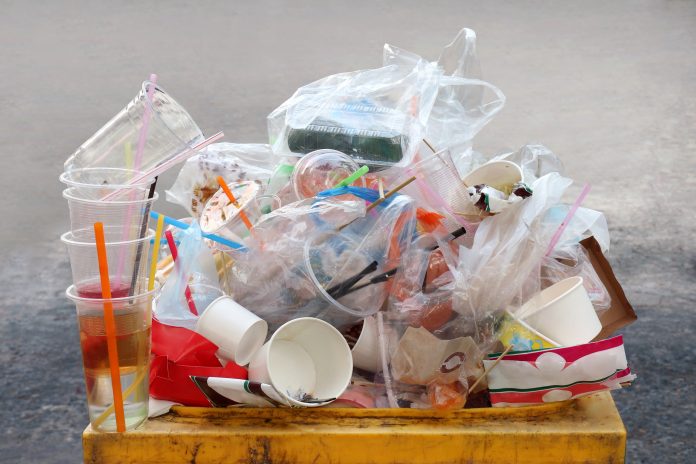Antonello Pezzini, Member of the European Economic and Social Committee shares his new vision of plastic production and plastic use
More than 25.8 million tonnes of plastic are currently produced in Europe every year, employing some 1.5 million people. But only 30% is recycled and the percentage of waste going to landfills or incinerators is still too high.
To stop this practice, which is polluting the land and the seas, eco-design efforts need to be stepped up and all stakeholders – private companies, public bodies and ordinary people – have to be brought into the process. Plastic must in the future be developed as part of a new smart, innovative and sustainable vision, in which design and production are capable of meeting reuse, repair and recycling requirements.
The introduction of plastic bottles has unfortunately consolidated the principle of one-way recipients. This has created significant environmental risk, since polyethylene like all oil-derived plastics is not biodegradable: on the contrary, it is virtually indestructible.
Waste recovery consequently offers an initial solution. According to World Economic Forum data, only 14% of plastic bottles are recycled. 40% end up in landfills, 14% in incinerators and/or energy recovery plants. 32% are discarded in the environment. Under these conditions, plastic that is not properly disposed of is not only a serious problem for the ecosystem but also represents a huge waste.
If the plastics deriving from oil processing are not destroyed, their production must be limited and existing plastics reused. Something we could do immediately is to extend bottle lifetimes, stopping them from being discarded in the environment after a single use. Proper differentiation of plastic waste generates economic gain and creates new jobs, but above all is beneficial for the environment and public health. In other words, the aim should be to prohibit deposit in landfills and promote the creation of new recycling facilities through tax incentives, standardisation and the simplification of the regulatory framework.
Bottle recycling is already a consolidated process in the textiles sector. For example, 54,000 1.5-litre plastic bottles can be recycled and converted into an excellent polyester that can be made into 7,000 backpacks. After successive transformations, it is no longer surprising that a plastic bottle may end up on display in the window of a luxury shop. Newlife®, a polyester polymer obtained from plastic bottles, took its place alongside silk and chiffon in 2012.
There is no reliable data on the amount of plastic that ends up in the sea. The best estimates suggest that the total weight of plastic waste in the oceans amounts to 150 million tonnes, representing a significant volume in cubic metres.
And matters are still getting worse. In 1965, for each kilo of fish there were 10 grammes of plastic in the sea (a ratio of 100:1); in 2014, 200 grammes (a ratio of 5:1) and, according to forecasts, in 2050 for each kilo of fish, there will be 1 kilo of plastic in the sea. Plastic bottles that end up in the sea take almost a thousand years to dissolve. In the meantime, they float and are carried by currents. They slowly break down into increasingly small pieces. Ocean currents push plastic waste towards a number of specific marine areas. There are at least four islands of plastic, the largest being in the North Pacific; others have been identified in the South Pacific, the Atlantic and the Indian Ocean.
Microplastic consists of plastic debris smaller than 5 mm. Microplastic derives either from cosmetic products (“microbeads”) or detergents; they can also be the result of larger plastic objectives breaking up. The small size of this debris means it is difficult to collect and it represents an invisible threat to the food resources of marine animals.
With regard to marine litter, there is an increasing need for coordination between initiatives by the European Commission and the International Convention (Marpol) in order to prevent pollution produced by ships, although there must be appropriate exemptions for small vessels and low-traffic ports.
The fisheries fund (EMFF) should be tapped to involve fishing organisations in organised marine waste collection. When properly trained, fishermen could supplement their fishing earnings by turning to the collection and recycling industry. The proposal for a directive on port reception facilities for plastic introduces new standards to combat the problem of marine waste, with measures intended to guarantee that waste produced on board a ship or collected at sea is not dumped but brought back on the land to be processed properly. Provision is also made for measures to reduce the administrative burden on ports, vessels and the competent authorities, together with incentives for fishermen engaged in waste collection.
The same approach applies to cleaning up rivers using cooperatives. It is estimated that between 1.15 to 2.41 million tonnes of plastic waste currently enter the seas every year from rivers. The top 20 polluting rivers, mostly located in Asia, account for 67% of the global total of plastic waste flowing into the oceans.
Today, however, the main eco-sustainability challenge is to come up with non-polluting and fully biodegradable plastics. The future seems to belong to bioplastic: scientific research has made great strides in this sector. The supply of oil-derived plastic bags has been banned since 1st January 2009: instead of plastic, the use of Mater-Bi® is being promoted, a carbon and hydrogen polymer obtained from maize starch.
Antonello Pezzini
Member
European Economic and Social Committee
Tel: +32 (0)2 546 90 11











